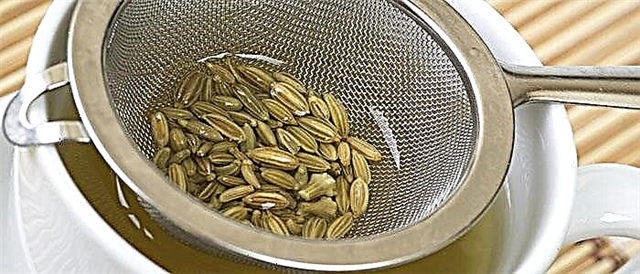
When a woman is expecting a child, she should be especially careful about taking any medications, since many drugs adversely affect the development of the baby and the course of pregnancy.
And therefore, if any ailments arise, self-medication while carrying a baby is unacceptable. It is up to the doctor to decide whether the pregnant woman needs to take any medications.
If you cannot do without the use of drugs, the expectant mother will be prescribed drugs that are safe for the fetus, for example, No-shpu. Such a remedy will not harm the development of the baby, but, on the contrary, will allow the baby to be carried out normally and give birth on time without complications.

Features of the drug
"No-shpa" is a Hungarian drug from the group of antispasmodics, the name of which comes from the words "no spasm" and can be literally translated "no spasms." It is available in pharmacies in two different forms. The most popular version of "No-shpy" are tablets, because it is an easy-to-use over-the-counter product. They are sold in boxes of 6 to 100, packed in blisters or plastic jars.
The medicine has a round convex shape, yellow with a greenish or orange tint, and the inscription "spa" is visible on one side of the tablet. Store such tablets at home during the entire shelf life (3 years) in a dry place at temperatures up to +25 degrees. The average cost of a small pack of 6 tablets is 60 rubles, a pack of 24 tablets is 120 rubles.
The second form of "No-shpy" is a solution for injections, which are given intravenously or intramuscularly. It is transparent and has a yellow-greenish color, sold in packs of 5 and 25 ampoules, containing 2 ml of liquid. The shelf life of such a drug is 5 years, and the average price of five ampoules is 100 rubles, but unlike tablets, this form of "No-shpa" requires a prescription from a doctor.


In addition to these two drugs, you can also find in the pharmacy "No-shpu forte". These are oblong tablets with the inscription "NOSPA" on one side. The main difference from the usual tableted "No-shpy" - this is the doubled dosage of the active ingredient. The rest of the drug "Forte" is identical, that is, the composition, indications and precautions for such a drug are the same as for "No-shpa" in tablets.

The active substance of all types of "No-shpy" is called drotaverine hydrochloride. Its dosage in one tablet is 40 mg (in the "forte" preparation - 80 mg), and in one milliliter of injectable solution - 20 mg. The tablets additionally include starch, lactose, povidone and some other substances for a dense structure. In a solution for injections, drotaverine is supplemented with sodium disulfite, sterile water and 96% alcohol.

When buying "No-shpa" in a pharmacy, it is important not to confuse this medicine with the drug "No-shpalgin".
The composition of such tablets from the Sanofi company also includes drotaverine at a dose of 40 mg, but it is supplemented with 500 mg of paracetamol and 8 mg of codeine. This remedy is referred to as spasmodic analgesics, since it relieves pain and cramps well. However, these tablets are contraindicated during pregnancy.
How does it work?
Drotaverin in any form of "No-shpa" is able to influence smooth muscle tissue, which is present in the walls of blood vessels and many internal organs - the gallbladder, bronchi, uterus, intestines and others. When this active compound enters the patient's bloodstream, it travels to the muscle cells and causes them to relax. Thereby spasms, which cause colic and pulling pain, disappear, and the normal functioning of the organ is restored.
Due to the effect of drotaverine on the vascular walls their expansion occurs, as a result of which blood pressure decreases slightly, which is important to consider in case of a tendency to hypotension. Unlike drugs from the group of muscle relaxants, "No-shpa" has no significant effect on the state of the nervous system, therefore, it is less harmful and can be used for both small children and expectant mothers.
The tablet taken orally is absorbed quickly enough and the therapeutic effect is observed after about half an hour.
If you want No-shpa to work faster, choose an injection injection, since after the injection the effect occurs in about 3-5 minutes.
Metabolic changes of drotaverine take place in the liver, and complete elimination of the drug occurs within 72 hours - with bile and through the kidneys.

In what situations is it prescribed for pregnant women?
The main indication for the use of "No-shpy" in women in position is an increased tone of the walls of the uterus. This condition is dangerous for both the expectant mother and the fetus. If it occurs in the first weeks of pregnancy, it can disrupt the process of attachment of the ovum and provoke a miscarriage. And therefore, the use of "No-shpa" in the 1st trimester is fully justified, as it helps to avoid spontaneous abortion and maintain pregnancy.
In the 2nd trimester, "No-shpu" is also used for hypertonicity, because the contraction of the muscular membrane of the uterus interferes with normal blood flow, which is why the baby does not receive important nutrients for development. However, starting from the end of the second trimester (from 26-30 weeks), the agent is used with caution so as not to cause relaxation of the cervix, due to which labor can begin earlier than it should happen in accordance with the terms.
Obstetricians-gynecologists use "No-shpu" during childbirth, if there is a risk of premature detachment of the placenta and rupture of the uterus, and excessively contracted muscle tissue squeezes the fetus, which can lead to injury to its internal organs. In such situations, an antispasmodic dropper allows you to restore normal labor and avoid complications.

When else is it used?
The antispasmodic action of "No-shpy" allows you to use such a medication for almost any spasms that cause discomfort and pain. The remedy is prescribed:
- with cholecystitis, pericholecystitis, cholangitis and gallstone disease, if the patient has pain or biliary colic;
- with gastritis, enteritis, spastic colitis, functional digestive disorders with abdominal cramps;
- with pyelitis, cystitis and other inflammatory processes in the excretory organs;
- with a dry cough, if it is caused by a spasm of the bronchi;
- with an increase in body temperature with a simultaneous pallor of the skin, when a spasm of peripheral vessels occurs;
- from a headache.
The question of the possibility of taking "No-shpy" during pregnancy with all these indications should be decided individually. As a rule, in the early stages, the drug can be used without fear, and at the end of pregnancy, with urological, gastroenterological and other diseases, other means are selected that will not affect the state of the cervix.


Contraindications
It is worth recalling that with all the safety of "No-shpy" for the fetus, it is forbidden to use this medicine uncontrollably, because there are limitations for treatment with such a remedy. For example, "No-shpu" is not prescribed for kidney disease, as this will affect the rate of elimination of the drug.
This drug is also contraindicated:
- with heart failure, as it can disrupt the heart rhythm, especially in high doses;
- with glaucoma, since "No-shpa" can cause an increase in intraocular pressure;
- with severe violations of the liver, because this will affect the metabolism of drotaverine;
- with hypersensitivity to any component in the composition, so as not to provoke an allergic reaction.
In addition, the drug in tablets is contraindicated in women with hereditary diseases in which the absorption of carbohydrates is impaired, for example, if a pregnant woman has been diagnosed with glucose-galactose malabsorption or lactase deficiency.
If the expectant mother has low blood pressure, it is also advisable to refuse treatment with No-Spa, as the drug may worsen the condition.
In the case of abdominal pain, a doctor's examination is first necessary, because such a pain syndrome can occur not only due to spasms and functional disorders, but in many dangerous pathologies, for example, with appendicitis.

Side effects
Occasionally, in expectant mothers, "No-shpa" can cause various side effects, including dizziness, nausea, constipation, headache, drop in blood pressure, allergic reaction and other negative symptoms. If at least one of them arose after taking a pill or injecting a solution, it is better to refuse further use of such an antispasmodic, replacing it with a doctor with such an analogue that will not provoke unwanted reactions.

Instructions for use
The drug in tablets should be swallowed with a small amount of water. The average single dose of such "No-shpy" is 40 mg (one standard tablet), but it can be increased to 80 mg (two regular tablets or one tablet of the drug "Forte"). This amount of drotaverine is often enough to eliminate all uncomfortable symptoms.
The drug is prescribed per day at a dosage of 120-240 mg, which is divided into 2-3 doses during the day. It is impossible to exceed the dose of 240 mg per day, that is, it is unsafe to take more than six conventional tablets or three pieces of No-shpy Forte.
If within an hour after taking pain and other symptoms persist, you need to inform your doctor so that he can choose another treatment.


When prescribing "No-shpy" in injections, the specialist individually determines both the method of administration of the solution and the required dosage. A woman can be prescribed from 40 to 240 mg of the active substance per day, which is administered using 1-3 intramuscular injections. If the patient has acute colic, the medicine can be injected slowly into a vein, at a dose of 40-80 mg. As a rule, "No-shpu" in injections is supplemented with other medications that help eliminate hypertonicity or another cause of spasms.
It is very important to correctly observe the dose prescribed by a specialist, since its excess leads to a deterioration in the work of the heart. Therefore, there is no need to try to get a faster effect by increasing the dosage of "No-shpa" yourself. Such actions will not speed up getting rid of pain, but can only harm.
How long to take "No-shpa" in tablets or injections depends on the clinical situation and many other factors. In many cases, the drug is used for only 1-2 days and is immediately canceled after improvement of the condition, but sometimes the medicine is prescribed for a longer period.

Reviews
There are mostly positive reviews about the use of No-shpy during pregnancy. In them, women call such a drug effective and confirm that it helped with the "stone" of the abdomen, colic and other problems, without affecting the development of the baby. According to the patients, such an antispasmodic is generally well tolerated, since an allergic or other side reaction is rare.
Among the minuses, the high cost is sometimes called when compared with other drugs with the same mechanism of action.
Analogs
If it becomes necessary to replace "No-shpa" with another medicine, the doctor will recommend one of the analogues for the active ingredient:
- Drotaverin;
- "Spazmol";
- Drotaverin-Ellara;
- "Trust";
- Droverin;
- Drotaverin-Teva;
- "Spazmonet".
These drugs are presented as tablets with a dosage of 40 mg or 80 mg, and ampoules with a sterile solution that can be injected into a vein or into muscle tissue. They are produced by companies from Russia, Israel, Belarus, so many of these analogues are cheaper.
In case of hypertonicity, "No-shpa" can also be replaced with "Papaverine". This antispasmodic is approved during pregnancy and works in a similar way to relieve cramps and lower blood pressure. One of its advantages is the presence of another dosage form - rectal suppositories.
This type of "Papaverine" is often used in pregnant women both in the first trimester and in the later stages, since it acts faster than tablets, differs in a simple composition (rarely provokes allergies) and can be used at home.
If the threat of termination of pregnancy is high, the doctor will prescribe "Papaverine" injections, which are performed in a hospital.





